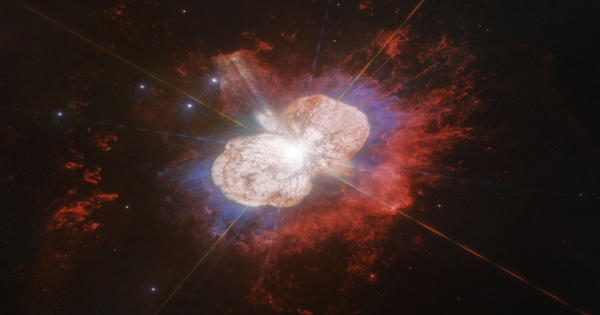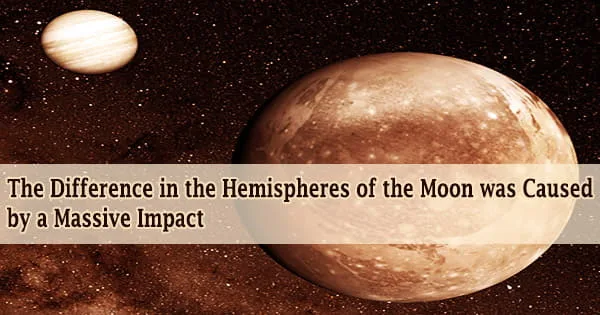Chemists from MIPT and Skoltech (the Skolkovo Institute of Science and Technology) used computer modeling to determine which compounds might be present in the interiors of Uranus, Neptune, and their ice satellites.
It generated exotic molecular and polymeric substances at high pressures, which are typical of the innards of such planets, according to researchers. Carbonic acid and orthocarbonic acid, sometimes known as ‘Hitler’s Acid,’ are two of these chemicals.
It has published the results of the study in the journal Scientific Reports.
“The smaller gas giants Uranus and Neptune consist largely of carbon, hydrogen and oxygen. We have found that at a pressure of several million atmospheres unexpected compounds should form in their interiors. The cores of these planets may largely consist of these exotic materials,” says Head of Laboratory of Computational Materials Discovery, Professor Artem R. Oganov.
Professor Oganov led a team that created USPEX, the world’s most general and powerful algorithm for crystal structure and compound prediction (Universal Structure Predictor: Evolutionary Xtallography).
Scientists have recently discovered several chemicals that are ‘forbidden’ in classical chemistry that may be stable at high pressures using this approach.
The smaller gas giants Uranus and Neptune consist largely of carbon, hydrogen and oxygen. We have found that at a pressure of several million atmospheres unexpected compounds should form in their interiors. The cores of these planets may largely consist of these exotic materials.
Professor Artem R. Oganov
These include previously undiscovered salt variations such as Na3Cl, NaCl3, NaCl7, and even Na3Cl2 and Na4Cl3, as well as exotic new magnesium, silicon, and aluminum oxides that may exist in super-Earth interiors.
Now, Gabriele Saleh (the study’s initial author) and Oganov from MIPT have decided to investigate the chemical behavior of the carbon-hydrogen-oxygen system at high pressure.
“This is an extremely important system because all organic chemistry ‘rests on’ these three elements, and until now it had not been entirely clear how they behave under extreme pressures and temperatures. In addition, they play an essential role in the chemistry of the giant planets,” says Oganov.
Under atmospheric pressure, all carbon, hydrogen, and oxygen compounds, with the exception of methane, water, and carbon dioxide, are thermodynamically unstable. Water and carbon dioxide stay stable as pressure rises, but methane begins to disintegrate at pressures above 93 gigapascals (0.93 million atmospheres), generating the heavy hydrocarbons ethane, butane, and polyethylene.
At a lower pressure of around 4 GPa, methane and molecular hydrogen interact to form co-crystals (two molecules making one crystal structure), whereas at 6 GPa, hydrates CO-crystals comprised of methane and water form.
To put this in perspective, the pressure at the Mariana Trench (the deepest region of the world’s oceans) is 108.6 megapascals, which is 1,000 times lower.
Oganov and Saleh set out to find all stable compounds in the range of 400 GPa (about 4 million atmospheres) and discovered a number of novel ones. These included a molecular hydrogen and methane 2CH4:3H2 clathrate (inclusion compound, a form of co-crystal) that is stable in the pressure range 10-215 GPa.
Carbonic acid (H2CO3) becomes thermodynamically stable at a pressure of 0.95 GPa (about 10,000 atmospheres), according to the researchers. This is uncommon for a chemical that is exceedingly unstable under normal settings, requiring strong acids for production and only existing in a vacuum at extremely low temperatures, according to the authors.
The innards of giant planets’ ice satellites, such as Jupiter’s moon Europa, provide circumstances conducive to the formation of carbonic acid. They are encased in a thick coating of ice on the outside, with an ocean around a rocky core beneath. Many scientists believe that life could exist in these waters.
“It was previously thought that the oceans in these satellites are in direct contact with the rocky core and a chemical reaction took place between them. Our study shows that the core should be ‘wrapped’ in a layer of crystallized carbonic acid, which means that a reaction between the core and the ocean would be impossible,” says Oganov.
Carbonic acid is transformed into a polymer that is stable to at least 400 GPa when the pressure reaches 44 GPa. Furthermore, an exothermic reaction between carbonic acid and water can occur at 314 GPa, resulting in orthocarbonic acid (H4CO4).
Due to its severe instability, scientists have yet to be able to manufacture this molecule in the lab. Orthocarbonic acid’s chemical structure resembles a swastika, which is why it’s also known as ‘Hitler’s Acid.’
“It is possible that the cores of Neptune and Uranus may contain significant amounts of a polymer of carbonic acid and orthocarbonic acid,” says Oganov.
















